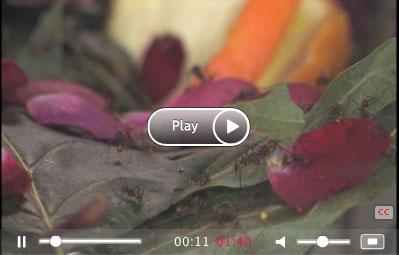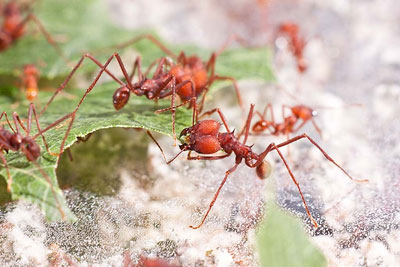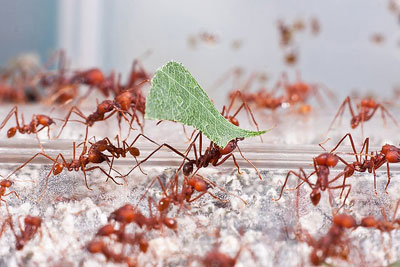
Video:
Caption: Leafcutter ants scurry with their harvest of leaves, which they use to fuel huge underground fungus farms. Found only in the New World tropics, leafcutter ants harvest as much as 17 percent of the rainforest leaf production, making them the neotropic's most influential herbivore -- insect or mammal. The genome of the leafcutter has now been sequenced by a team of UW-Madison researchers, revealing that the ant has dispensed with nutrient acquisition genes still found in other ant species.
Video: courtesy UW-Madison College of Agricultural and Life Sciences
Download FLV as a .zip file

Caption: The leafcutter ants of the New World are signature denizens of the tropical forest and rank among the most important neotropical herbivores, harvesting as much as 17 percent of all forest leaves. The leaves are used to fuel massive underground fungus gardens, which the ants use for food. In the Feb. 10 edition of the journal Public Library of Science Genetics, a team of researchers from the labs of bacteriology Professors Cameron Currie and Garret Suen published the genome, the complete genetic blueprint, for the leafcutter Atta cephalotes. The study showed the ants' fungal farming lifestyle has led to the insect shedding nutrient acquisition genes that other ant species have retained.
Photo: Wolfgang Hoffmann
Date: 2009
High-resolution JPEG

Caption: The leafcutter ants of the New World are signature denizens of the tropical forest and rank among the most important neotropical herbivores, harvesting as much as 17 percent of all forest leaves. The leaves are used to fuel massive underground fungus gardens, which the ants use for food. In the Feb. 10 edition of the journal Public Library of Science Genetics, a team of researchers from the labs of bacteriology Professors Cameron Currie and Garret Suen published the genome, the complete genetic blueprint, for the leafcutter Atta cephalotes. The study showed the ants' fungal farming lifestyle has led to the insect shedding nutrient acquisition genes that other ant species have retained.
Photo: Wolfgang Hoffmann
Date: 2009
High-resolution JPEG